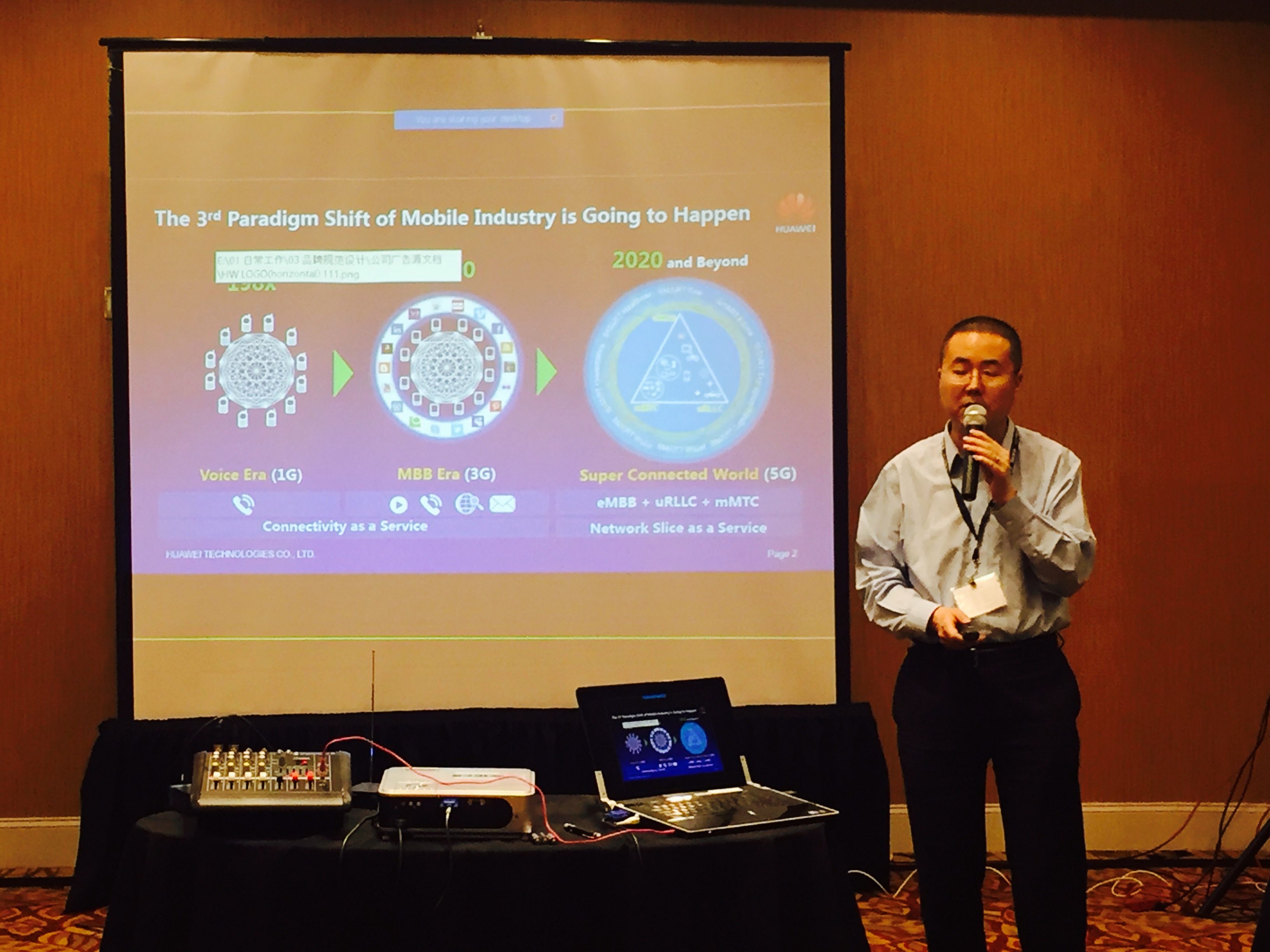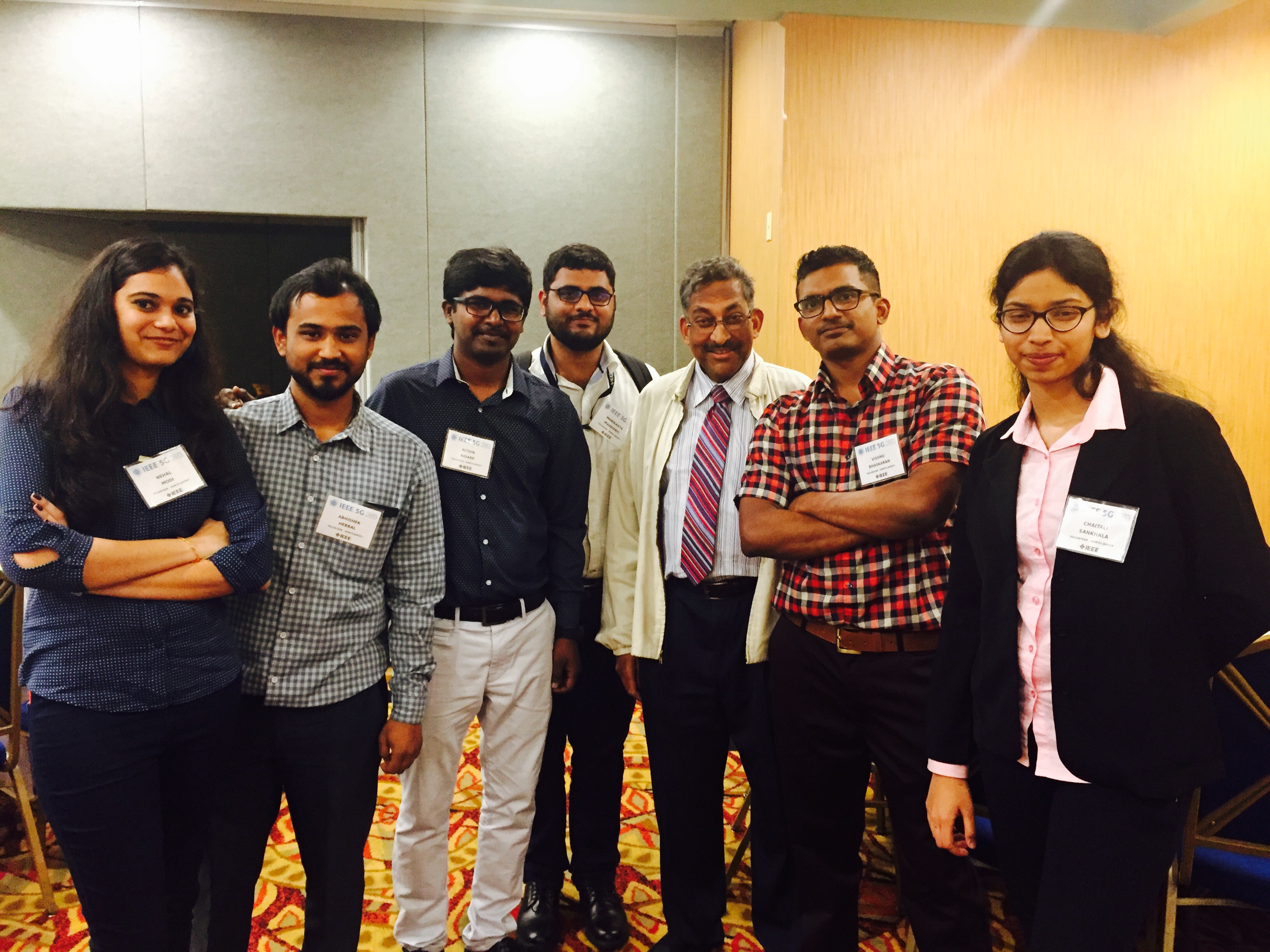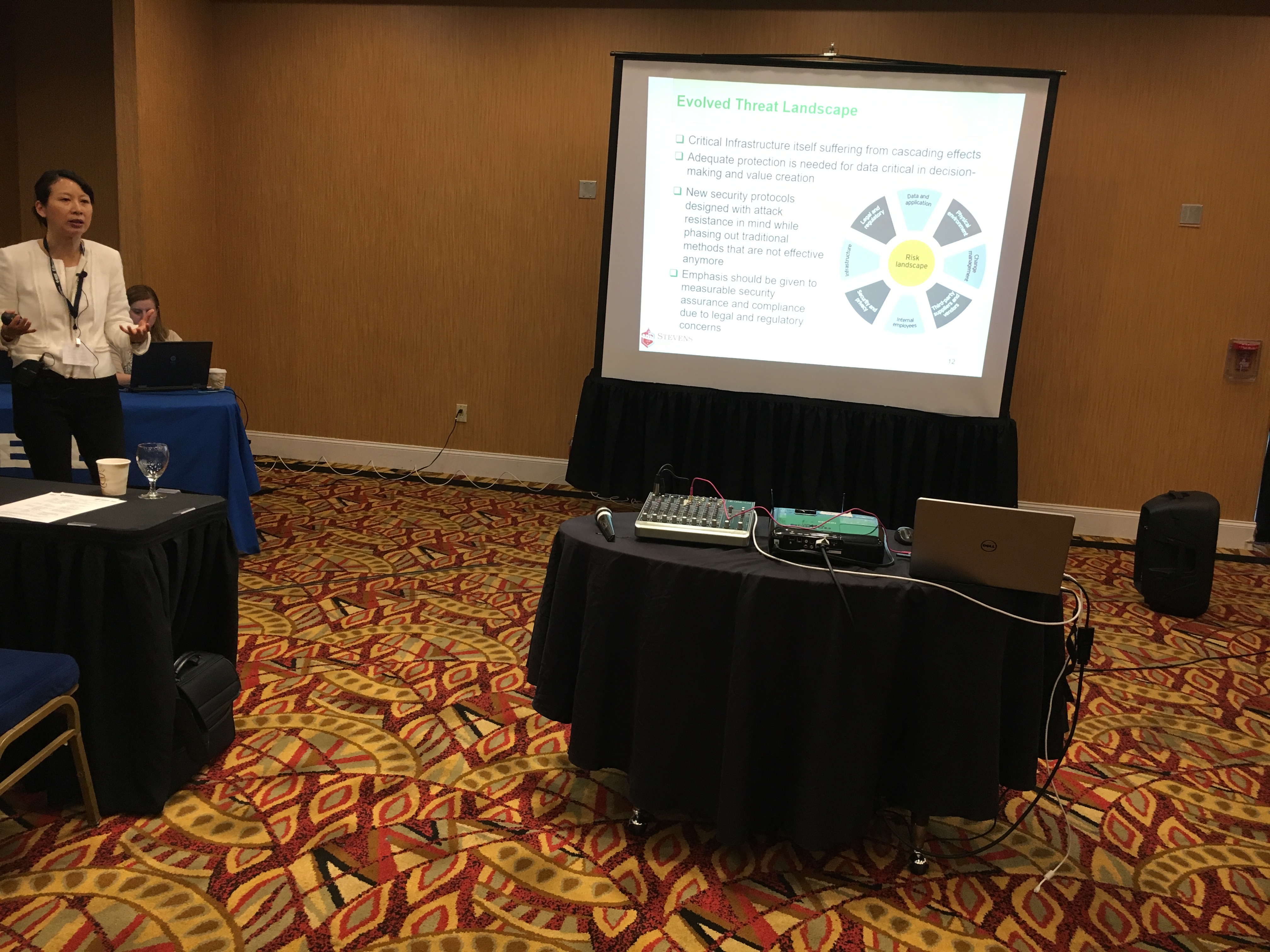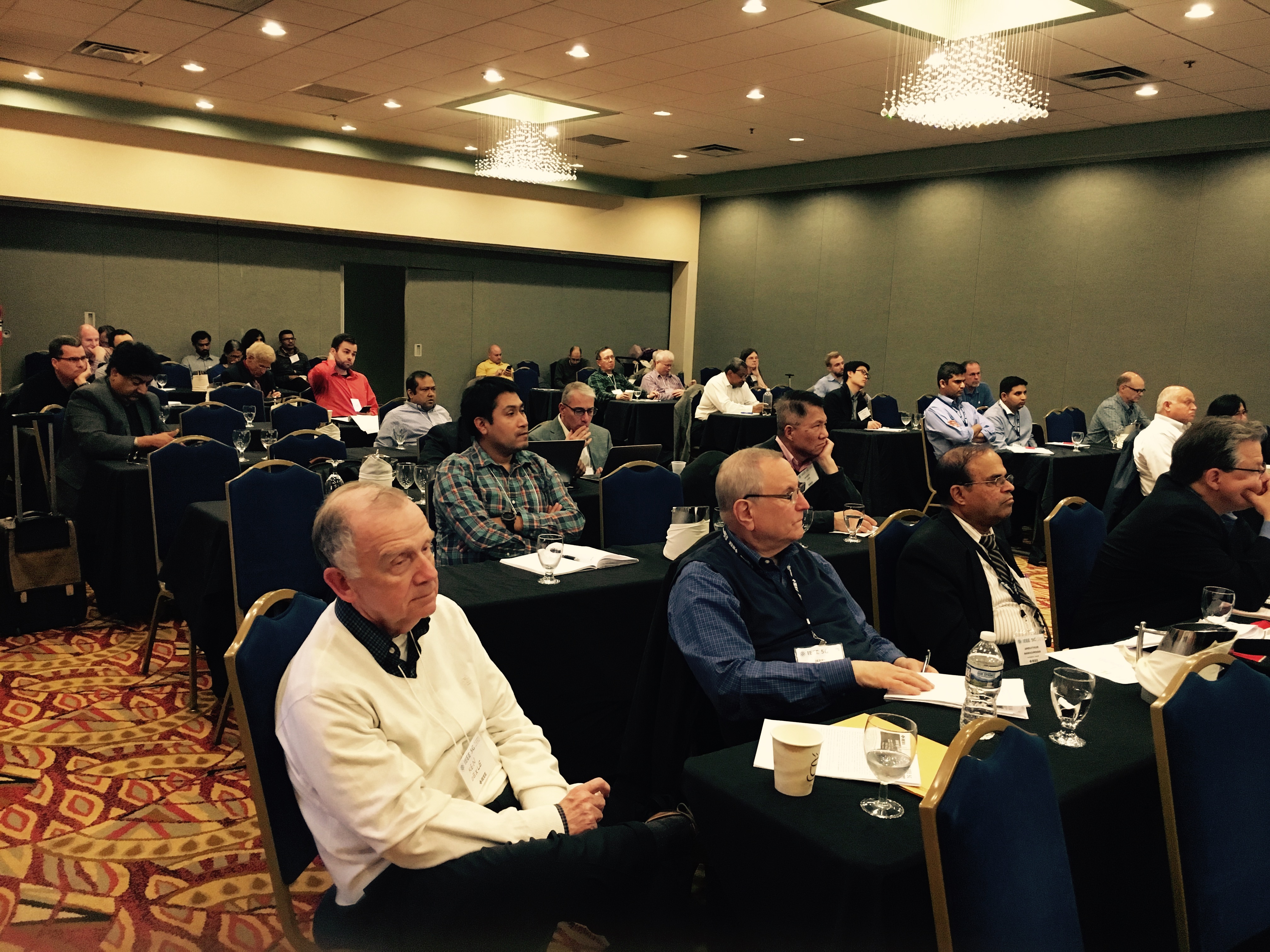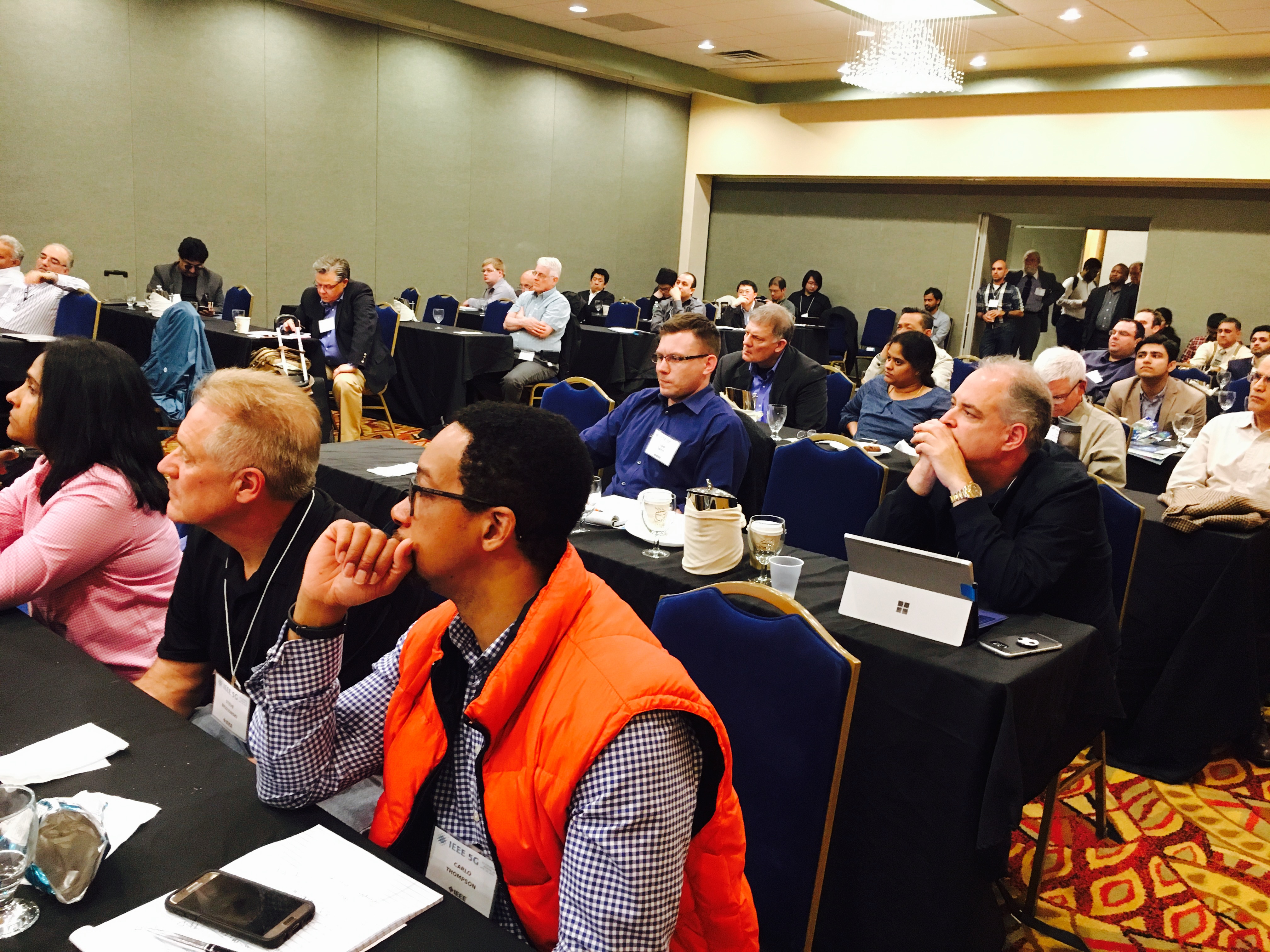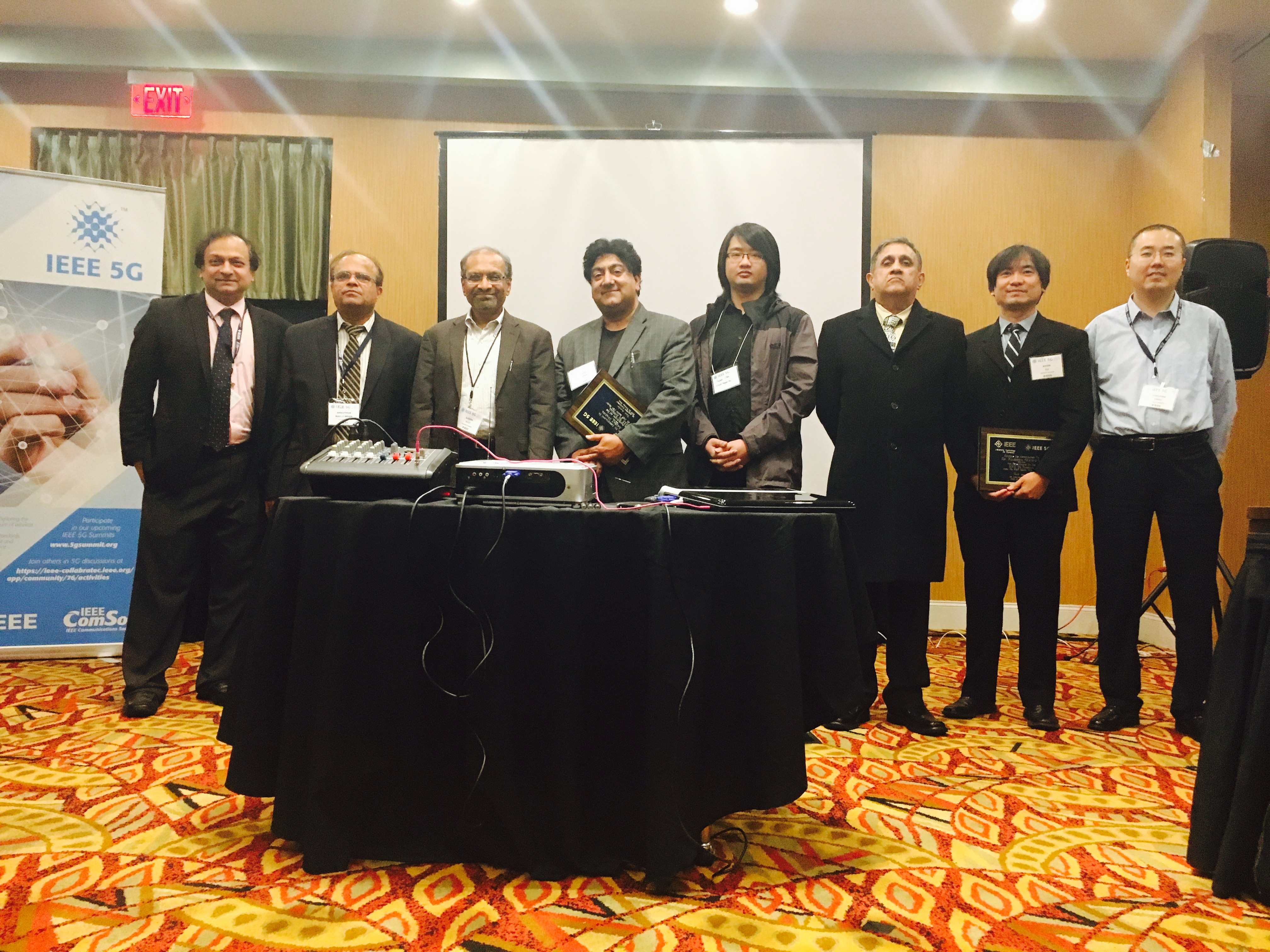IEEE 5G Learning Series - New Jersey Edition
 The IEEE 5G Education Working successfully conducted our first 5G Learning Series on April 26, 2017 at the Edison Hotel and conference center, Edison, NJ. We had an entire day full of invigorating presentations by invited speakers, who provided cutting edge information on 5G key areas. A large number of attendees, around 200 registrants (115 registrants at the location and 85 web attendees), filled the conference hall to its capacity. The tutorial had also strong student participation, both as attendees and volunteers. Participants made it successful by their participation and interactions with invited speakers and professional colleagues... We received excellent feedback from the attendees along with requests to conduct a similar learning series on 5G in 2018 to benefit IEEE members and other professionals in the area.
The IEEE 5G Education Working successfully conducted our first 5G Learning Series on April 26, 2017 at the Edison Hotel and conference center, Edison, NJ. We had an entire day full of invigorating presentations by invited speakers, who provided cutting edge information on 5G key areas. A large number of attendees, around 200 registrants (115 registrants at the location and 85 web attendees), filled the conference hall to its capacity. The tutorial had also strong student participation, both as attendees and volunteers. Participants made it successful by their participation and interactions with invited speakers and professional colleagues... We received excellent feedback from the attendees along with requests to conduct a similar learning series on 5G in 2018 to benefit IEEE members and other professionals in the area.
Read more of the Chair's Report.
 IEEE 5G Learning Series - NJ Edition
IEEE 5G Learning Series - NJ Edition
Date: April 26, 2017 8:00 AM to 6:00 PM
Venue: The E Hotel Banquet & Conference Center
3050 Woodbridge Avenue, Edison, NJ 08837
Attendee Registration (in-person and remote online access via Webex): Click here.
Patronage Registration: Click here.
Earn CEU Credits: You will receive 0.7 CEU for this tutorial. There is an additional charge of $9 for the CEU certificate. You must attend the entire Tutorial to receive the certificate. Register for the CEU certificate using the Attendee Registration link: Click here.
Download the IEEE 5G Learning Series Flier here (PDF, 166 KB).
Download the IEEE 5G Learning Series Patronage Flier here (PDF, 176 KB).
- Agenda
- Speakers
- Abstracts
- Technical Co-Sponsors
- Attendee Registration Pricing
- Patronage Opportunities
The IEEE 5G Learning Series is designed to demystify 5G technologies and train technology and industry teams with the knowledge of 5G Tech. The tentative agenda for the tutorial is as follows:
Agenda
Tutorial Speakers
- Dr. Sudhir Dixit, Fellow and Evangelist, Basic Internet Foundation
- Dr. K Raghunandan, New York Transit
- Dr. Yongxing Zhou, Vice President, Huawei
- Dr. Lingjia Liu, Associate Professor EECS, University of Kansas
- Dr, Yingying (Jennifer) Chen, Stevens Institute of Technology
- Dr. Jiachen Chen, Rutgers WINLAB
- Dr. Xiaoxiong (Kevin) Gu, IBM T. J. Watson Research Center
- Akshay Sharma, VP at Beesion
- Dr. Amruthur Narasimhan, Information Security Consultant
5G is not just the next evolution of 4G technology; it is a paradigm shift. 5G is not only evolutionary (providing higher bandwidth and lower latency than current-generation technology); more importantly, 5G is revolutionary, in that it is expected to enable fundamentally new applications with much more stringent requirements in latency (e.g. real time) and bandwidth (e.g. streaming). 5G should help solve the last-mile/ last-kilometer problem and provide broadband access to the next billion users on earth at much lower cost because of its use of new spectrum and its improvements in spectral efficiency. 5G is an enabler of exciting use cases that will transform the way people live, work, and engage with their environment. In the short term, 5G can support exciting use cases such as the IoT, smart transportation, eHealth, smart cities and smart homes, industrial automation, and entertainment services.
Speakers:

Sudhir Dixit is a Fellow and Evangelist of Basic Internet at the Basic Internet Foundation in Norway and also the Director of Home for Mind and Body at the CTIF Global Capsule (CGC), Rome, Italy. From December 2013 to April 2015, he was a Distinguished Chief Technologist and CTO of the Communications and Media Services for the Americas Region of Hewlett-Packard Enterprise Services in Palo Alto, CA, and prior to this he was the Director of Hewlett-Packard Labs India from September 2009. From June 2009 to August 2009, he was a Director at HP Labs in Palo Alto. Before joining HP, he worked in various leadership roles at BlackBerry, Nokia, NSN and Verizon Communications. Sudhir Dixit has 21 patents granted by the US PTO and has published over 200 papers and edited, co-edited, or authored eight books.
From 2010 to 2012, he was an Adjunct Professor of Computer Science at the University of California, Davis, and, since 2010, he has been a Docent of Broadband Mobile Communications for Emerging Economies at the University of Oulu, Finland. A Life Fellow of the IEEE, Fellow of IET and IETE, Dixit holds a Ph.D. from the University of Strathclyde, Glasgow, U.K. and an M.B.A. from the Florida Institute of Technology, Melbourne, Florida.
 Dr. K. Raghunandan currently leads the digital wireless deployment effort in New York City Transit. Part of this effort was to provide 4G service in all the below ground subway stations. Also part of the effort is to deploy 60GHz Millimetric wave links that serve to replace fiber in difficult terrains. An integral part of his work is to trial new wireless technologies in the transit environment. He is a member of FCC Region-8, body that coordinates frequency allocations for public safety in the tri state region.
Dr. K. Raghunandan currently leads the digital wireless deployment effort in New York City Transit. Part of this effort was to provide 4G service in all the below ground subway stations. Also part of the effort is to deploy 60GHz Millimetric wave links that serve to replace fiber in difficult terrains. An integral part of his work is to trial new wireless technologies in the transit environment. He is a member of FCC Region-8, body that coordinates frequency allocations for public safety in the tri state region.
Prior to joining Transit, he worked in Bell Labs leading the RAN team at 3GPP standards. He was instrumental in development of cellular handsets leading the field test and interoperability effort. He has several publications and holds an US patent. Through IEEE and regional bodies he regularly provides talks, tutorials and mentors graduate and research students. He has been an examiner in the IEEE ComSoc’s coveted WCET certification exam. He is the past chair of METSAC the IEEE section area council for NY Metro region.
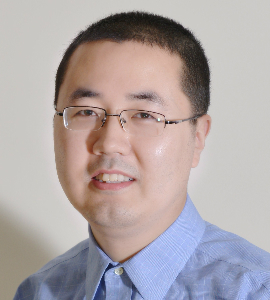 Yongxing Zhou is Vice President of Huawei Wireless Radio Access Technology Department and Head of MIMO and Spectrum Research Competency Center. He is currently working on 3GPP LTE-Pro and 5G technologies. Prior to 2014, he headed Huawei 3GPP LTE Standardization Team and particularly led development of LTE and LTE- Advanced technologies such as MIMO, FD-MIMO, CoMP, 3D channel modeling, ePDCCH and FDD/TDD Carrier Aggregation etc. Dr. Yongxing Zhou has more than 100 issued patents. Before joining Huawei, he was with Samsung from 2002 to 2009 working on IEEE 802.22, IEEE 802.11n standard and implementations as well as TDD related research. He received his Ph.D degree from Tsinghua University, China.
Yongxing Zhou is Vice President of Huawei Wireless Radio Access Technology Department and Head of MIMO and Spectrum Research Competency Center. He is currently working on 3GPP LTE-Pro and 5G technologies. Prior to 2014, he headed Huawei 3GPP LTE Standardization Team and particularly led development of LTE and LTE- Advanced technologies such as MIMO, FD-MIMO, CoMP, 3D channel modeling, ePDCCH and FDD/TDD Carrier Aggregation etc. Dr. Yongxing Zhou has more than 100 issued patents. Before joining Huawei, he was with Samsung from 2002 to 2009 working on IEEE 802.22, IEEE 802.11n standard and implementations as well as TDD related research. He received his Ph.D degree from Tsinghua University, China.
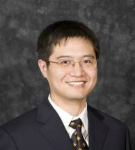 Dr. Lingjia Liu received the Bachelor of Science (B.S.) degree with the highest honor in Electronic Engineering Department fromShanghai Jiao Tong University, Shanghai, China, and completed his Doctor of Philosophy (Ph.D.) degree atTexas A&M Universityin Electrical and Computer Engineering. He is currently an Associate Professor in the EECS Department at the University of Kanas (KU). Prior to joining KU, he spent more than four years working in the Mitsubishi Electric Research Labs and the Samsung Research America. He was a leading delegate from Samsung on downlink MIMO, Coordinated Multipoint (CoMP) transmission/reception, and Heterogeneous Network (HetNet) in 3GPP RAN1. He was elected as theNew Faces of Engineering 2011by the Diversity Council of the National Engineers Week Foundation. From 2013 to 2016, he has been continuously selected as U.S. Air Force Office of Scientific Research (AFOSR)/Air Force Research Laboratory (AFRL) summer faculty fellow. In May 2015, he received theMiller Professional Development Award for Distinguished Researchat KU, the only winner selected across all tenure-track and tenured faculty across all engineering departments. He receivedGlobal Samsung Best Paper Awardtwice (in 2008 and 2010 respectively) and IEEE GLOBECOMBest Paper Awardin 2016. Lingjia Liu is a senior member ofIEEE. He is currently serving as anEditorof theIEEE Trans. on Wireless Commun.(TWireless), theIEEE Trans. on Commun.(TCom), and asAssociate Editorof theEURASIP Journal on Wireless Communications and Networkingas well as Wiley'sInternational Journal on Communication Systems. For the past five years, he has been serving as the Workshop Chair of the IEEE GLOBECOM Workshop on Emerging Technologies for 5G. Lingjia Liu has40+ journal publications,60+ conference papers,15+ US granted patents,30+ US patent applications,10+ essential intellectual property rights (IPRs), and numerous technical contributions to major wireless standards including both 3GPP LTE/LTE-Advanced andIEEE 802.16m.
Dr. Lingjia Liu received the Bachelor of Science (B.S.) degree with the highest honor in Electronic Engineering Department fromShanghai Jiao Tong University, Shanghai, China, and completed his Doctor of Philosophy (Ph.D.) degree atTexas A&M Universityin Electrical and Computer Engineering. He is currently an Associate Professor in the EECS Department at the University of Kanas (KU). Prior to joining KU, he spent more than four years working in the Mitsubishi Electric Research Labs and the Samsung Research America. He was a leading delegate from Samsung on downlink MIMO, Coordinated Multipoint (CoMP) transmission/reception, and Heterogeneous Network (HetNet) in 3GPP RAN1. He was elected as theNew Faces of Engineering 2011by the Diversity Council of the National Engineers Week Foundation. From 2013 to 2016, he has been continuously selected as U.S. Air Force Office of Scientific Research (AFOSR)/Air Force Research Laboratory (AFRL) summer faculty fellow. In May 2015, he received theMiller Professional Development Award for Distinguished Researchat KU, the only winner selected across all tenure-track and tenured faculty across all engineering departments. He receivedGlobal Samsung Best Paper Awardtwice (in 2008 and 2010 respectively) and IEEE GLOBECOMBest Paper Awardin 2016. Lingjia Liu is a senior member ofIEEE. He is currently serving as anEditorof theIEEE Trans. on Wireless Commun.(TWireless), theIEEE Trans. on Commun.(TCom), and asAssociate Editorof theEURASIP Journal on Wireless Communications and Networkingas well as Wiley'sInternational Journal on Communication Systems. For the past five years, he has been serving as the Workshop Chair of the IEEE GLOBECOM Workshop on Emerging Technologies for 5G. Lingjia Liu has40+ journal publications,60+ conference papers,15+ US granted patents,30+ US patent applications,10+ essential intellectual property rights (IPRs), and numerous technical contributions to major wireless standards including both 3GPP LTE/LTE-Advanced andIEEE 802.16m.
 Yingying (Jennifer) Chen is a Professor in the Department of Electrical and Computer Engineering at Stevens Institute of Technology. Her research interests include cyber security and privacy, Internet of Things, smart healthcare and mobile computing and sensing. She has published over 100 papers in journals and refereed conference papers in these areas. She received her Ph.D. degree in Computer Science from Rutgers University. Prior to joining Stevens, she was with Alcatel-Lucent at Murray Hill, New Jersey. She is the recipient of the NSF CAREER Award and Google Faculty Research Award. She also received NJ Inventors Hall of Fame Innovator Award. She is the recipient of the Best Paper Awards from ACM AsiaCCCS 2016, IEEE CNS 2014 and ACM MobiCom 2011. She also received the IEEE Outstanding Contribution Award from IEEE New Jersey Coast Section each year 2005 - 2009. Her research has been reported in numerous media outlets including MIT Technology Review, Fox News Channel, Wall Street Journal, and National Public Radio. She serves on the editorial boards of IEEE Transactions on Mobile Computing (IEEE TMC), IEEE Transactions on Wireless Communications (IEEE TWireless), and IEEE Network Magazine.
Yingying (Jennifer) Chen is a Professor in the Department of Electrical and Computer Engineering at Stevens Institute of Technology. Her research interests include cyber security and privacy, Internet of Things, smart healthcare and mobile computing and sensing. She has published over 100 papers in journals and refereed conference papers in these areas. She received her Ph.D. degree in Computer Science from Rutgers University. Prior to joining Stevens, she was with Alcatel-Lucent at Murray Hill, New Jersey. She is the recipient of the NSF CAREER Award and Google Faculty Research Award. She also received NJ Inventors Hall of Fame Innovator Award. She is the recipient of the Best Paper Awards from ACM AsiaCCCS 2016, IEEE CNS 2014 and ACM MobiCom 2011. She also received the IEEE Outstanding Contribution Award from IEEE New Jersey Coast Section each year 2005 - 2009. Her research has been reported in numerous media outlets including MIT Technology Review, Fox News Channel, Wall Street Journal, and National Public Radio. She serves on the editorial boards of IEEE Transactions on Mobile Computing (IEEE TMC), IEEE Transactions on Wireless Communications (IEEE TWireless), and IEEE Network Magazine.
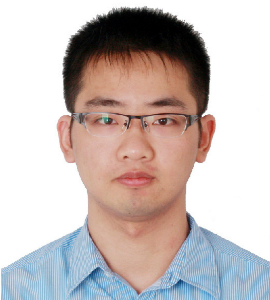
Dr. Jiachen Chen is a postdoctoral research associate at Rutgers University since October 2015. He was a PhD student in the University of Goettingen, Germany between 2010 and 2015. Dr. Chen has been working in the field of Information-Centric Network (ICN) for more than 5 years. His prior work was one of the first studies which enables the efficient publish/subscribe (pub/sub) communication in ICN with group relationships. As an extension (and use case for the information-centric pub/sub), he has been looking at gaming, disaster management and vehicular communication. In the part few years, he shifted his focus onto dynamic IoT communication and tried to augment the IoT communication with information-centric (service-centric) communication. His research interest also covers cloud computation, content delivery and security.
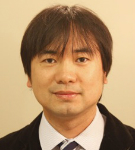 Dr. Xiaoxiong (Kevin) Gu received his Ph.D. in electrical engineering from the University of Washington in 2006. He joined IBM Research as a Research Staff Member in January 2007. His research activities are focused on 5G radio access technologies, optoelectronic and mm-wave packaging, electrical designs, modeling and characterization of communication and computation systems. He has recently worked on antenna-in-package design and integration for mm-wave imaging and communication systems including K-band, V-band and W-band phased-array modules. Dr. Gu has authored and co-authored over 70 technical papers and has 8 issued patents. He received an IBM Outstanding Technical Achievement Award in 2016, four IBM Plateau Invention Awards in 2012 ~ 2016, the IEEE EMC Symposium Best Paper Award in 2013, two SRC Mahboob Khan Outstanding Industry Liaison Awards in 2012 and 2014, the Best Conference Paper Award at IEEE EPEPS in 2011, IEC DesignCon Paper Awards in 2008 and 2010, the Best Interactive Session Paper Award at IEEE DATE in 2008, and the Best Session Paper Award at IEEE ECTC in 2007. Dr. Gu is the co-chair of Professional Interest Community (PIC) on Computer System Designs at IBM. He is a Senior Member of IEEE and has been serving on the technical program committees for numerous IEEE Conferences (EPEPS, ECTC, EDAPS) and DesignCon.
Dr. Xiaoxiong (Kevin) Gu received his Ph.D. in electrical engineering from the University of Washington in 2006. He joined IBM Research as a Research Staff Member in January 2007. His research activities are focused on 5G radio access technologies, optoelectronic and mm-wave packaging, electrical designs, modeling and characterization of communication and computation systems. He has recently worked on antenna-in-package design and integration for mm-wave imaging and communication systems including K-band, V-band and W-band phased-array modules. Dr. Gu has authored and co-authored over 70 technical papers and has 8 issued patents. He received an IBM Outstanding Technical Achievement Award in 2016, four IBM Plateau Invention Awards in 2012 ~ 2016, the IEEE EMC Symposium Best Paper Award in 2013, two SRC Mahboob Khan Outstanding Industry Liaison Awards in 2012 and 2014, the Best Conference Paper Award at IEEE EPEPS in 2011, IEC DesignCon Paper Awards in 2008 and 2010, the Best Interactive Session Paper Award at IEEE DATE in 2008, and the Best Session Paper Award at IEEE ECTC in 2007. Dr. Gu is the co-chair of Professional Interest Community (PIC) on Computer System Designs at IBM. He is a Senior Member of IEEE and has been serving on the technical program committees for numerous IEEE Conferences (EPEPS, ECTC, EDAPS) and DesignCon.
 Akshay Sharma is the VP of Corporate Strategy at Beesion, a startup with unique solutions for value-added services deployed in Telefonica, America Movil, Orange, and others, offering Telecom CRM, BSS, Order Management, and other back office solutions that are model-driven, and rules based. It is a complete offering with in-memory, dynamic binding in run-time of newer marketing campaigns, minimizing downtime, and lengthy development and deployment cycles of the past. He was an analyst at Gartner, for over a decade, a frequent speaker at tech events, and often quoted in leading institutions like CNN, and Wall St. Journal, etc. In 2006 he was the CTO of a smartphone firm that had a prototype smartphone with streaming video, and cellular/WiFi roaming. Formerly a manager of Networks Engineering at Bell Canada, he has worked for Nortel as well as startups which are now part of Intel and IBM. He was a visiting advisor at BellCore (now Ericsson). Additionally he is a board member for a 501 (c) 3 charity called No More Tears, helping people in need.
Akshay Sharma is the VP of Corporate Strategy at Beesion, a startup with unique solutions for value-added services deployed in Telefonica, America Movil, Orange, and others, offering Telecom CRM, BSS, Order Management, and other back office solutions that are model-driven, and rules based. It is a complete offering with in-memory, dynamic binding in run-time of newer marketing campaigns, minimizing downtime, and lengthy development and deployment cycles of the past. He was an analyst at Gartner, for over a decade, a frequent speaker at tech events, and often quoted in leading institutions like CNN, and Wall St. Journal, etc. In 2006 he was the CTO of a smartphone firm that had a prototype smartphone with streaming video, and cellular/WiFi roaming. Formerly a manager of Networks Engineering at Bell Canada, he has worked for Nortel as well as startups which are now part of Intel and IBM. He was a visiting advisor at BellCore (now Ericsson). Additionally he is a board member for a 501 (c) 3 charity called No More Tears, helping people in need.
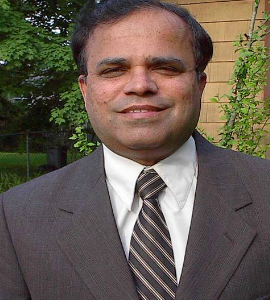
Amruthur Narasimhan is a consultant in Information Security, Cyber Security and privacy areas. He has over 25 years of experience in System Engineering, Architecture, Technical Leadership and Management, Software Development, Communication Protocols, and Project Management. He has held various positions in multinational companies: Software Engineer Manager Chief at SAIC, Security Consultant at Northrop Grumman, President of Amrutek Services, Technical Manager at Avaya, Principal Technical Staff Member at AT&T, and Associate Professor in Department of Computer Science at Stevens Institute of Technology.
Narasimhan was chair of the IEEE conference on Mobile Security/Cyber Security and Privacy held in 2014 and 2015. He received the IEEE third Millennium Medal for contributions in Electronic Commerce and Multimedia Technology in May 2000. He also received IEEE Region 1 award for technical achievement in 2002, and for eBusiness and Internet Technologies and technical achievements for Innovation in Artificial Intelligence Technology in 1997. He has been coordinator and speaker for various IEEE conferences on VoIP security, WLAN security and Multimedia security. He was chair of IEEE NJ coast section consultant’s network, chair of IEEE NJ Coast Section PACE, Chair of IEEE NJ Coast Section (1996-2002) and Chair of IEEE NJ Computer Chapter (1993-1996).
Narasimhan has good communication skills being a coach for Dale Carnegie courses on Human relations. He has graduated as Competent Toast Master in Public Speaking from Toast Masters International. He received a Ph.D. in Computer Science from Indian Institute of Science, Bangalore, India, one of the prestigious institutions in India.
Abstracts:
5G Basics: The foremost requirement of 5G wireless and mobile communication networks is the ability to support transmission speeds of the order of 100s of Mb/sec to 1Gb/sec (at times with very low latency). The networks of future (towards 2025) would be required to cater for an overall 1000x capacity increase in comparison to the systems deployed during the earlier part of the present decade. These objectives will be achieved through the introduction of new technologies in Radio Access Networks (RANs).
Enhanced MIMO (Multi Input Multi Output) and Large Scale Antenna Systems (or Massive MIMO) are two important PHY layer “capacity/coverage” enhancement technologies. Deployment of hot spots of micro/pico/femto cells using mm Wave (above 30 GHz) ultra broad band technologies would provide multi-fold network capacity extension. An order of magnitude performance enhancement will be achievable through inter-technology RAN HetNets (Heterogeneous Networks). Air interface adaptations required to cater for very high energy efficiency and massively parallel nature of transmissions from IoT devices will form an integral part of the 5G design. The above requirements imply an order of magnitude performance improvement in signal processing, RF, and microwave & optoelectronics with reduced energy consumption and flexibility of deployment and operations. This module will present the basics of the above enabling technologies to achieve the stringent requirements of the 5G RANs.
5G Core and the role of NFV and SDN: Description of major new RAN enabling technologies for 5G systems in the first module, 5G Basics, is followed by the description of future CN technologies and the resulting flexible network architecture solutions leveraging the confluence of IT and telecommunications through the technologies of NFV and SDN. Architecture solutions such as C-RAN (Cloud RAN) and technologies like SDN (Software Defined Networking) and NFV (Network Function Virtualization) would be widely deployed in 5G networks. Network performance/cost ratio can be optimized by exploiting different dimensions of flexibility thus introduced. Efficiency improvements in network dimensioning are possible through, e. g., grouping of computational resources (as in C-RAN); traffic offloading in HetNets and decoupling of user data and control planes offered by SDN/NFV.
This presentation goes into the details of virtualization and SDN by covering such topics as the benefits of virtualization, consideration of planning and deployment of a 5G eco-system, potential architectures and ecosystems, standards activities targeting the 5G systems, and some selected use cases of (and roadmap towards) NFV deployments. This module will be concluded with a brief description of open research and technology challenges for implementation of future generation networks.
Prospect of 5G Air Interface: Opportunities and challenges: The new connected digital society with varieties of heterogeneous services (MBB and the IoT) provision has brought unprecedented challenges to future radio access and mobile core networks. Technology and spectrum innovations have to meet those diversified requirements for specific application scenarios within an integrated/unified radio access technology framework. This tutorial will firstly illustrate the transformation from spectrum efficiency to service-specificand user experience based evaluation metrics is needed. Key technology enablers will be hereby analyzed and evaluated to accelerate business success of 5G and the IoT. 5G New Radio (NR) standard progress will be introduced in this tutorial and we will show how this paradigm shift is becoming reality.”
Importance of Millimetric waves in 5G: Millimetric waves (30GHz – 300 GHz) are poised as a great contributor towards phenomenal data rates. However there are several challenges to implement this technology. With the initial implementation yielding encouraging results, industries are gearing up to the task of producing Millimetric wave components, circuits and systems. This tutorial provides an overview of what this involves not only in terms of producing equipment, but also how to deploy and optimize the radio network. The tutorial begins with current deployments in the Millimetric wave bands (both unlicensed and licensed) and moves to possible large scale deployments of future. Are the expectation of high data rates real? How much of this is practical?
This talk addresses some of these issues and provides some insights.
5G IoT Network – Service Oriented Communication with Global Reachability: The advent of new Internet of Things (IoT) devices has posed challenges to the underlying network design. We envision that the 5G network for IoT devices should support: 1) global reach-ability – the devices need to be identified and located from any place in the network, 2) mobility support – the devices need to have seamless connection even in presence of device mobility, 3) richer communication patterns – the devices need communication patterns like query/response, pub/sub, anycast, etc., and 4) resource efficiency – a large proportion of IoT devices are severely constrained in energy, computation, and/or network capacity.
MobilityFirst (MF) is a future Internet architecture that has the potential to satisfy the requirements of the new IoT network – persistent globally unique identifiers GUID’s) provides global reach-ability; late-binding based on global name resolution service (GNRS) supports mobility in an efficient manner; communication patterns like unicast, multicast and anycast are also supported natively. To extend the coverage of MF to devices with power, computation and network constraints, MF-IoT is proposed as a light-weight variant (but is still compatible with) MF. Concept of “service-oriented communication” is also encouraged to satisfy the communication widely used in IoT world.
In this tutorial, we will walk through the design and implementation of both MobilityFirst and MF-IoT to explain how different communications will be realized in the 5G IoT network. To help understand the concept of service-oriented communication, we will use several typical IoT applications to show the benefits that the users and devices can get. We will also look at potential new IoT applications that can be supported in the new environment.
Friend or Foe? Security Issues in IoT Devices Empowered by 5G Networks: 5G networks will offer data speeds 10 to 100 times faster than current 4G networks. In addition to increased speed, 5G networks will offer lower latency, increased reliability, better connectivity from more places, and greater capacity, allowing more users and more devices to be connected at the same time. The resulting infrastructure will finally make the Internet of Things (IoT) scalable, with more than 20.8 billion “things”—including buildings, cars, machines, appliances and wearable devices—expected to be online by the time 5G rolls out in 2020, up from 4.9 billion things in 2015. The IoT presents numerous benefits to consumers, but security and privacy could be a serious concern preventing the wide deployment of IoT. In this tutorial, we use two examples in wearable devices and smartphones to demonstrate the security concerns in IoT deployment. In the first example, we show that while the embedded sensors in wearable devices (such as smartwatches and activity trackers) have the capability of monitoring and inferring human daily activities, they could also be utilized to reveal user’s sensitive information. In particular, we demonstrate a serious security breach of wearable devices in the context of divulging secret information (i.e., key entries) while people accessing key-based security systems. Existing methods of obtaining such secret information relies on installations of dedicated hardware (e.g., video camera or fake keypad), or training with labeled data from body sensors, which restrict use cases in practical adversary scenarios. In this tutorial, we show that a wearable device can be exploited to discriminate mm-level distances and directions of the user’s fine-grained hand movements, which enable attackers to reproduce the trajectories of the user’s hand and further to recover the secret key entries. In the second example, we explore the limits of audio ranging on mobile devices in the context of a keystroke snooping scenario. Acoustic keystroke snooping is challenging because it requires distinguishing and labeling sounds generated by tens of keys in very close proximity. Existing work on acoustic keystroke recognition relies on training with labeled data, linguistic context, or multiple phones placed around a keyboard — requirements that limit usefulness in an adversarial context. In this tutorial, we show that mobile audio hardware advances can be exploited to discriminate mm-level position differences and that this makes it feasible to locate the origin of keystrokes from only a single phone behind the keyboard.
Silicon Integration and Packaging - the Hardware Pillars of mmWave 5G Communication: mmWave technology is rising as a crucial component for 5G radio access and other emerging ancillary wireless networks including Gb/s device-to-device communication and mobile backhaul. This tutorial covers recent advances in state-of-the-art mm-wave silicon technology, packaging and integrated antenna design in the context of 5G communications. The main challenges in 5G hardware development and the corresponding mitigation strategies are discussed with a focus on RFIC, antenna and packaging integration technologies. The talk emphasizes the following key enablers for the commercial scale deployment of mm-wave technology in the 5G era: 1) highly integrated and complex circuits in silicon technologies, and 2) strategies for IC, package, antenna and board co-design and integration. Through various examples of mmWave transceivers with antennas-in-package demonstrated in hardware, this talk illustrates how these challenges can be addressed for a variety of potential 5G usage scenarios, from PAN to backhaul.
Critical Issues of IoT Empowered by 5G - A Case Study on Self-Driving Vehicles: The proliferation of Internet of Things (IoT) devices in connected automobile systems creates challenges of harnessing large data empowered by 5G while maintaining security and confidentiality, as well as business, social and legal challenges. The sheer scope of IoT carries countless security and privacy implications for businesses, individuals and organizations. The proliferation of IoT devices creates challenges of harnessing large data empowered by 5G while maintaining security and confidentiality, as well as business, social and legal challenges.
In this talk some use cases of autonomous vehicles will be discussed for their implications on security, privacy, social and legal challenges.
Proliferation of large-scale deployment of IoT devices without proper design for solutions to security, privacy and big-data challenges has attracted the auto industry's attention. Proper administrative, social and legal changes are needed by people, government and businesses.
Newer Low Code Back Office Capabilities for 5G, how a new BSS can enable 5G Innovations: 5G holds the promise of providing newer services like UltraHD video, leveraging unlicensed spectrum, enhanced support of M2M and IoT applications, holistic security, and with distributed cloud RAN architectures. Newer service chaining of functions with open APIs will occur, blending the cloud with the network. However, as in any new innovation, the legacy back office Business Support System (BSS) often becomes the bottleneck to rapid deployments within carriers. This talk will discuss these issues and possible solutions, using novel DevOPs, Low Code model-driven and cloud-based approaches to BSS, opening the door to further 5G innovations.
Technical Co-Sponsors:
IEEE Region 1
IEEE Connecticut Section
IEEE New Jersey Coast Section
IEEE New York Section
IEEE North Jersey Section
IEEE Long Island Section
IEEE Princeton/Central Jersey Section
IEEE Connecticut Section
Attendee Registration:
| On or before April 6 | After April 6 | |
| IEEE Member | $50 | $75 |
| IEEE Student | $20 | $35 |
| IEEE Life Member | $20 | $35 |
| Non-Member | $100 | $150 |
Cancellations received prior to April 15th will receive a 50% reimbursement of registration fee.
Patronage and Exhibitor Opportunities:
| Platinum Sponsor | Gold Sponsor | Silver Sponsor |
| Company logo and link placement on tutorial website | Company logo and link placement on tutorial website | Company logo and link placement on tutorial website |
| Company logo on tutorial totebags | Company logo on tutorial totebags | Company logo on tutorial totebags |
| 4 complimentary registrations | 2 complimentary registrations | 1 complimentary registration |
| Table and product demonstration | Table and product registration | Table and product registration |
| Product presentation | ||
| $2000 on or before April 6 $2500 after April 6 |
$1500 on or before April 6 $2000 after April 6 |
$1000 on or before April 6 $1500 after April 6 |

